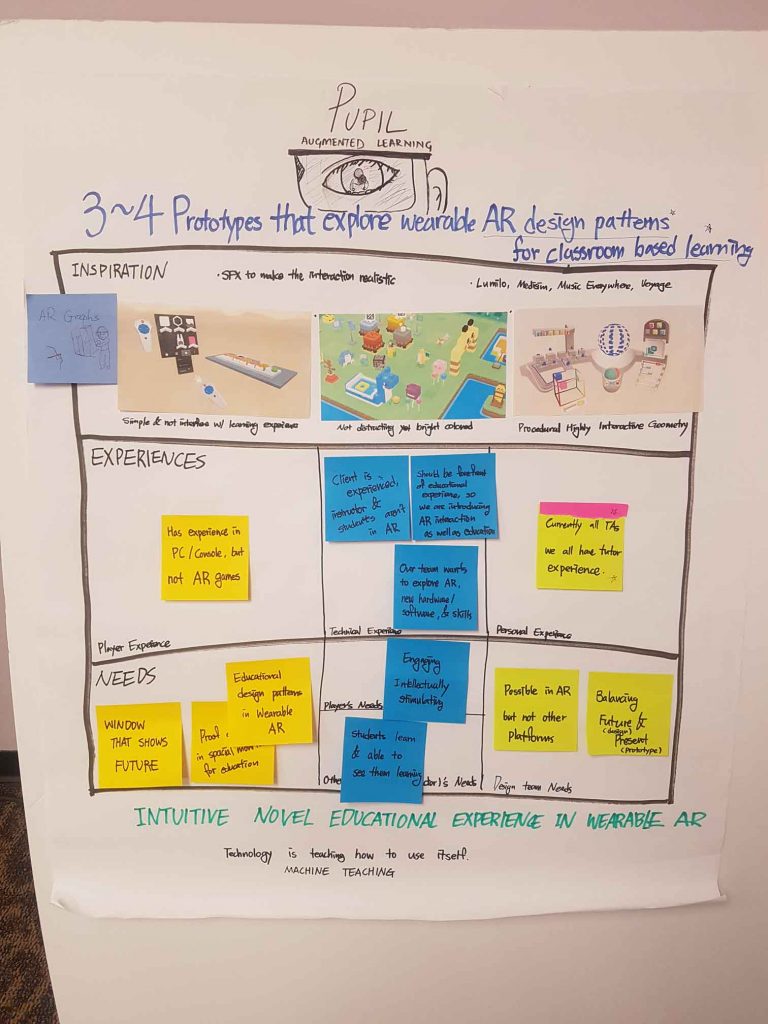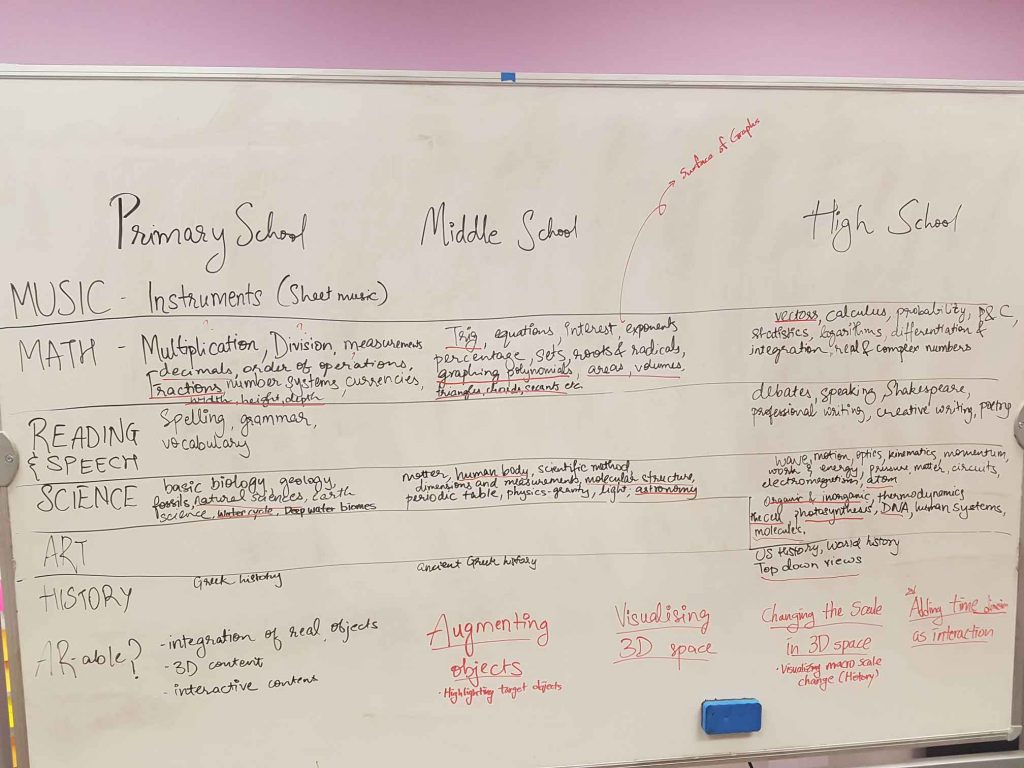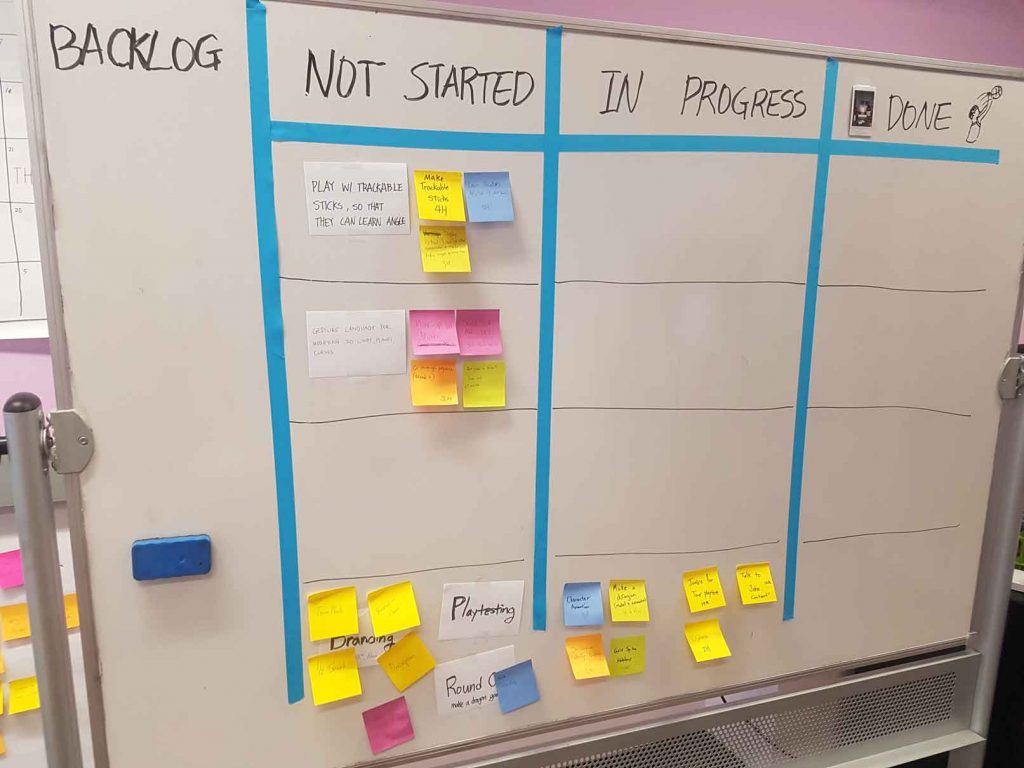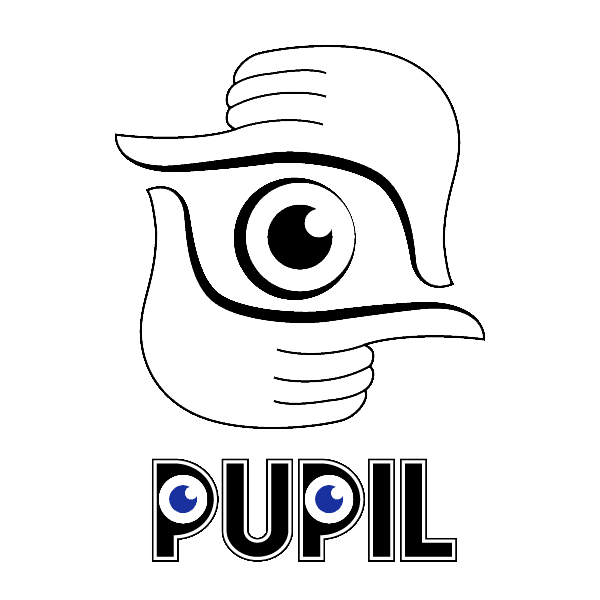Week 2 Summary
In Week 2, we shape our team and design that are suitable for rapid prototype. As a team, we mainly discussed what content we are interested in, and use that concept to formulate first prototype. Our first prototype will focus on simple and direct application of AR. Gradually we will challenge ourselves to push the AR design into a field that is hard to apply.
Building Project Wireframe
Given the client’s focus on classroom-based learning and AR, the questions we have are:
What concepts are hard to visualize?
What teaching methods could be improved using AR?
What needs no significant enhancement?

We created a composition box for the Playtesting To Explore workshop. During the workshop, we explored the natural affordances for interactions like grabbing (which the Meta 2 allows). One problem with the Hololens is that it becomes hard to create meaningful interactions with the limited interactions it allows.
Our player experience goal was formulated as an “intuitive novel educational experience in wearable AR”. There is an interesting tension between something being novel and intuitive at the same time, and thus it will be an exciting area to explore.
Design Process
The two parameters that are important for us to judge for this project are:
1) Demographic: Elementary School, Middle School or High School?
2) Interactions: Learner-content, Learner-learner or Learner-teacher?
We thought about locking down a demographic and exploring various interaction dynamics. The increased complexity and abstract nature of concepts for high school STEM subjects made us naturally gravitate to that demographic first. However, we needed to take a closer look at the curricula for elementary and middle school to see if there were areas we were missing that could be especially engaging in an AR medium.

We highlighted the topics we thought had potential for augmentation with virtual objects. As we discussed our ideas, we also identified an emerging pattern of the strengths of AR:
- Visualizing 3D Objects – engaging with complex mathematical concepts in physical space
- Augmenting Real Objects – AR could augment physical objects used as teaching aids in the classroom.
- Scale – AR could make it possible to observe objects too small, or too large to be brought into the classroom. An interactive model could allow you to compare its scale to familiar objects.
- Time – Interacting with virtual objects enables you to visualize their change over time
We brainstormed some high-level concepts that we then pitched to our faculty advisors, our client, and also plan to pitch it to a panel of teachers next week on a high school visit.
Team Formation
Since we are doing a rapid prototype, we decided to split our teams into two groups of three. We had a even balance of a programmer, a designer, and an artist for each group. Our plan is to have a prototype from each group biweekly so in the end, we will have at least 8 prototypes. Last month of the semester (November), we will iterate on one or two prototypes that we think it has a potential for it.

For our Scrum board, each team came up with valid task for their prototype. Currently, our task is mainly about golden spiking our new platforms. Our prototype should mirror what will going to happen in the future. However, current platforms does not have enough interactions that will portrait a suitable interactions that we designed. So, exploring the platform is also a big task for us.
